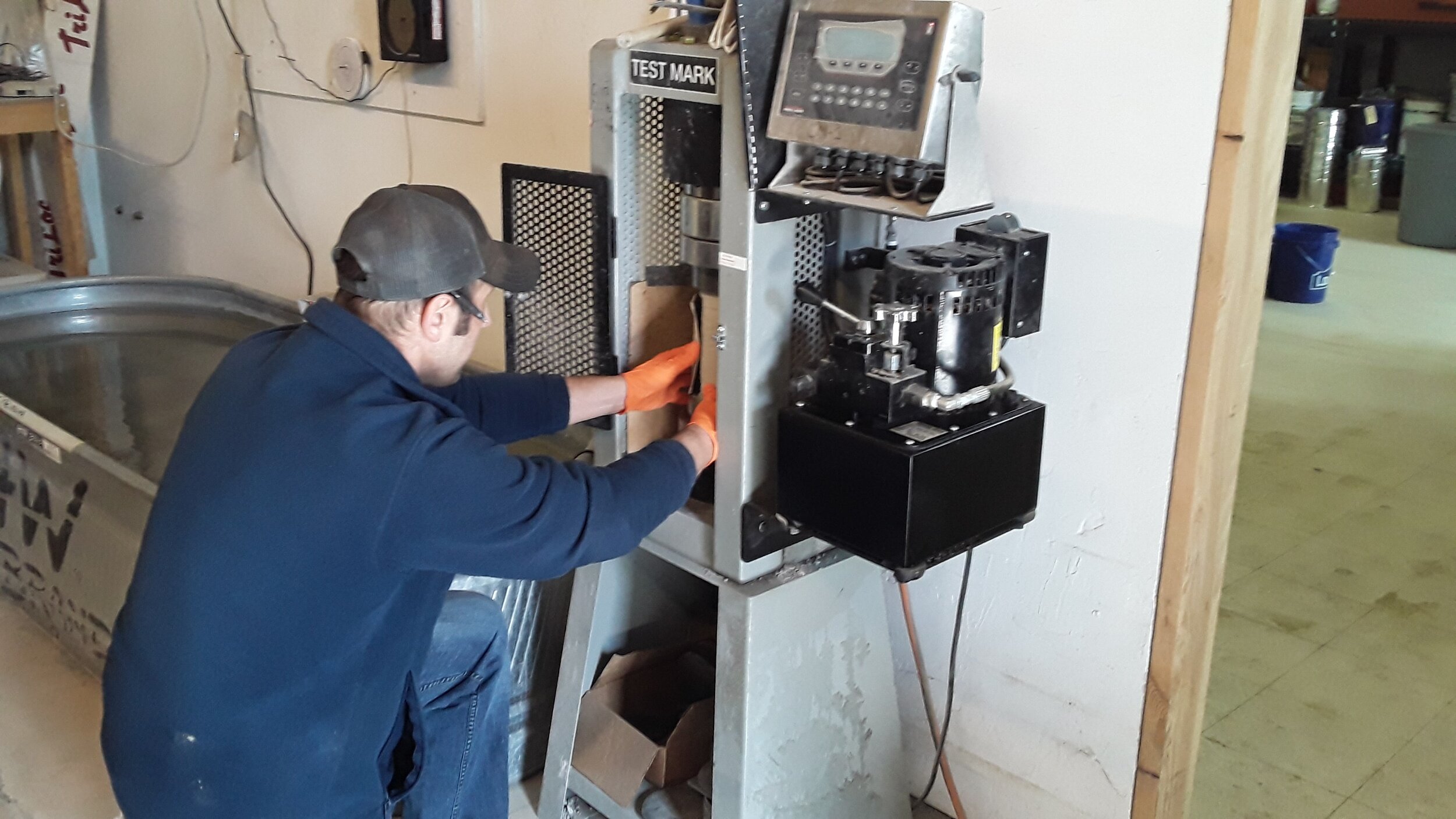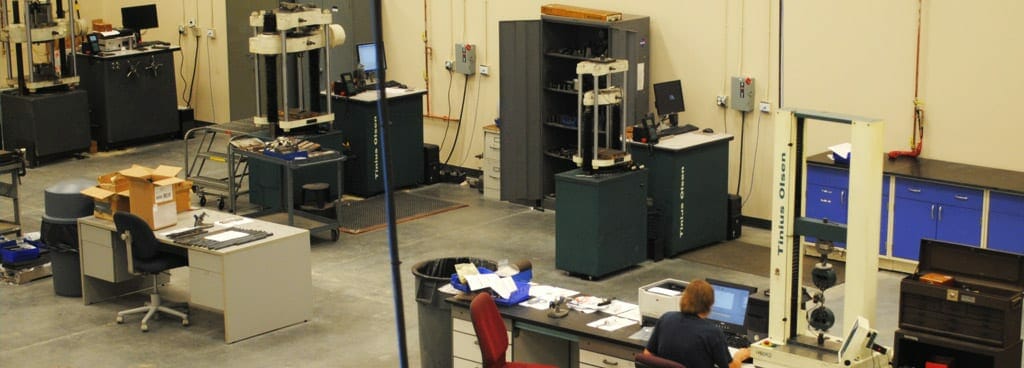Quality Assurance Unleashed: Material Testing Lab for Project Integrity
Quality Assurance Unleashed: Material Testing Lab for Project Integrity
Blog Article
Unveiling the Tricks of Products: Innovations in Modern Material Screening
In the ever-evolving world of products scientific research, researchers are regularly looking for ways to unlock the concealed secrets of different materials. The pursuit to understand the residential properties, behavior, and prospective applications of products has actually led to amazing advancements in modern-day product testing. From nanotechnology and expert system to non-destructive screening and high-throughput testing, brand-new techniques are emerging that guarantee to change our understanding of products. What are these developments? Exactly how do they function? And what can they disclose concerning the products we experience daily? In this discussion, we will certainly unwind the mysteries behind these sophisticated innovations and discover just how they are improving the field of product science.
Nanotechnology: Enhancing Product Testing Abilities
Nanotechnology has actually transformed material screening by improving its capabilities and allowing for extraordinary precision and precision. With the capacity to control and control products at the nanoscale, designers and scientists have actually had the ability to uncover brand-new insights right into the habits and homes of various products. This has opened a whole brand-new opportunity for product testing, enabling researchers to delve much deeper right into the essential characteristics of products and explore their prospective applications.
One of the crucial advantages of nanotechnology in product testing is its capability to offer highly exact dimensions. By using specialized nanoscale probes and sensing units, researchers can get detailed info about a material's mechanical, electric, and thermal homes. This degree of accuracy is vital for industries such as aerospace, automobile, and electronic devices, where even the tiniest inconsistency from preferred requirements can have significant consequences.
Moreover, nanotechnology has actually permitted the advancement of unique testing techniques that were formerly unbelievable. Scanning probe microscopy strategies, such as atomic force microscopy and scanning tunneling microscopy, enable scientists to picture and adjust products at the atomic degree. This unprecedented level of control and observation has actually led the way for advancements in understanding product habits and making cutting-edge products with customized residential or commercial properties.
Artificial Intelligence: Reinventing Product Evaluation
The assimilation of fabricated intelligence has actually caused a transformation in product analysis, significantly boosting the rate, accuracy, and performance of the procedure. With the capacity to evaluate huge amounts of data in real-time, expert system (AI) algorithms can quickly recognize patterns, abnormalities, and relationships that may otherwise go undetected by human experts. This makes it possible for scientists and researchers to obtain a much deeper understanding of products and their residential properties, resulting in the advancement of new and better materials for numerous applications.
AI-powered product analysis additionally permits the prediction of product actions under various problems, saving significant time and resources in the screening stage. By replicating different scenarios, AI formulas can accurately forecast exactly how materials will certainly carry out in various atmospheres, enabling designers to make educated choices regarding their viability for certain applications.
Furthermore, AI formulas can optimize product testing procedures by automatically readjusting specifications and experiment layouts based on real-time responses (material testing lab). This not only quickens the testing procedure but likewise ensures that the maximum quantity of information is gotten from each experiment, resulting in even more comprehensive and trusted results

Non-Destructive Testing: Exploring Products From Within
Non-destructive screening techniques supply an one-of-a-kind method to explore the inner structure and residential or commercial properties of products without triggering any damages or alteration. These strategies have changed the field of product testing by enabling researchers and engineers to take a look at materials from within, without jeopardizing their integrity. Non-destructive screening methods use various innovations and approaches to examine products and offer beneficial insights right into their composition, flaws, and efficiency.
One widely made use of non-destructive testing method is ultrasonic screening, which involves sending high-frequency acoustic waves through a material and assessing the reflected waves to identify its inner structure. This technique is generally used to discover imperfections, such as cracks or spaces, in metals, composites, and concrete. One more strategy, called X-ray radiography, utilizes X-rays to produce photos of the internal features of a material, making it especially valuable for inspecting welds and finding surprise defects.
Various other non-destructive screening methods include magnetic particle screening, which utilizes electromagnetic fields to determine surface area and near-surface flaws in ferromagnetic materials, and eddy existing screening, which makes use of electromagnetic induction to spot problems in conductive products. These methods, together with others like thermography and aesthetic examination, give beneficial information concerning the architectural honesty and top quality of products, guaranteeing their integrity and security in different applications.
Non-destructive testing is especially important in markets such as aerospace, automobile, energy, and building, where the performance and reliability of products are of utmost relevance. By enabling detailed product analysis without causing damages or change, non-destructive screening techniques play a vital role in ensuring the top quality and durability of products in a wide variety of applications.
High-Throughput Screening: Accelerating Product Exploration
High-throughput screening strategies have actually transformed the process of product discovery by accelerating the recognition and assessment of brand-new products. check these guys out This approach permits scientists to rapidly evaluate a lot of materials, making it possible for the identification of promising prospects for further examination.
High-throughput screening entails the use of automated systems and robotics to execute experiments on a big range (material testing lab). This enables scientists to swiftly evaluate a vast variety of materials under different conditions, such as temperature level, structure, and stress. By examining the resulting information, researchers can identify products with desired buildings, such as high stamina, conductivity, or thermal security
Among the essential advantages of high-throughput testing is its capacity to speed up the discovery of brand-new products with improved residential properties. Traditional techniques of product exploration often include test and mistake, which can be inefficient and lengthy. With high-throughput testing, researchers can methodically explore a large range of products in a portion of the moment, significantly speeding up the discovery process.
Additionally, high-throughput testing can additionally give valuable insights into the underlying structure-property connections of products. By examining a lot of products with differing compositions and structures, researchers can better understand how different elements anonymous influence material residential or commercial properties. This understanding can then be utilized to create and enhance products with certain buildings for numerous material testing lab applications, such as power storage space, electronic devices, and health care.
Advanced Simulation Techniques: Anticipating Material Performance
Advanced simulation techniques play an important duty in forecasting the efficiency of materials in different applications. These strategies include using computer models and mathematical algorithms to replicate the habits of materials under various conditions. By replicating the actions of materials at the atomic and molecular degree, scientists can acquire important insights into their mechanical, thermal, and chemical homes.
Among the crucial benefits of innovative simulation methods is their ability to forecast material performance before physical testing. This not only saves time and resources however likewise enables researchers to explore a wider variety of materials and layout specifications. In the area of materials layout, simulations can help determine the optimal structure and framework of a material to accomplish details homes.

In addition to anticipating product performance, these simulation techniques likewise help in understanding the underlying systems that control product behavior. By evaluating the simulation results, scientists can obtain understandings into the fundamental principles that determine the buildings and performance of materials.
Conclusion
In final thought, the developments in material screening methods have greatly boosted our understanding and evaluation of various products. Nanotechnology has actually enabled for improved capacities in testing and manipulating products at the nanoscale. Non-destructive testing has actually allowed us to explore the internal residential properties of materials without creating damage.
The quest to recognize the homes, behavior, and possible applications of materials has actually led to amazing advancements in modern-day product testing. These strategies have actually transformed the area of material testing by enabling researchers and designers to examine products from within, without endangering their stability. By evaluating a big number of products with varying structures and structures, scientists can better comprehend just how different aspects affect material buildings. In the field of products design, simulations can aid identify the optimum make-up and structure of a material to attain specific residential properties.
In conclusion, the developments in product screening techniques have considerably boosted our understanding and analysis of various materials.
Report this page